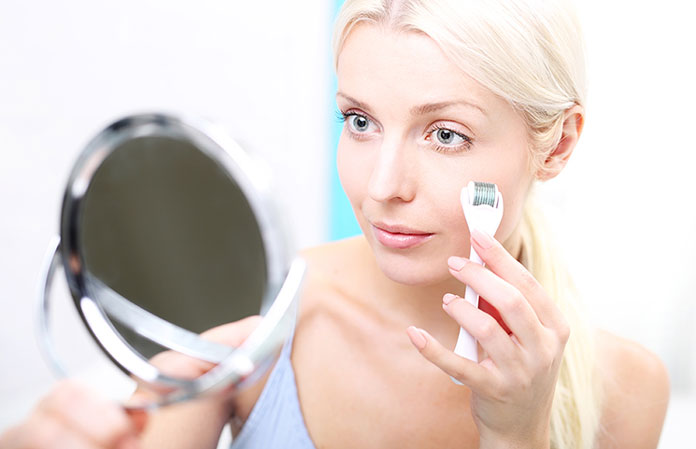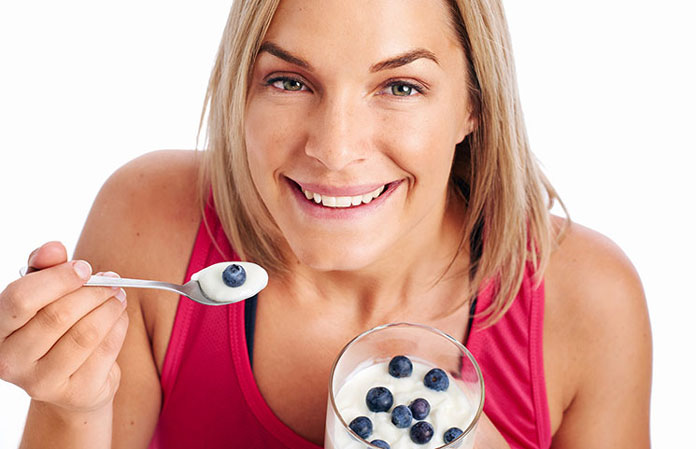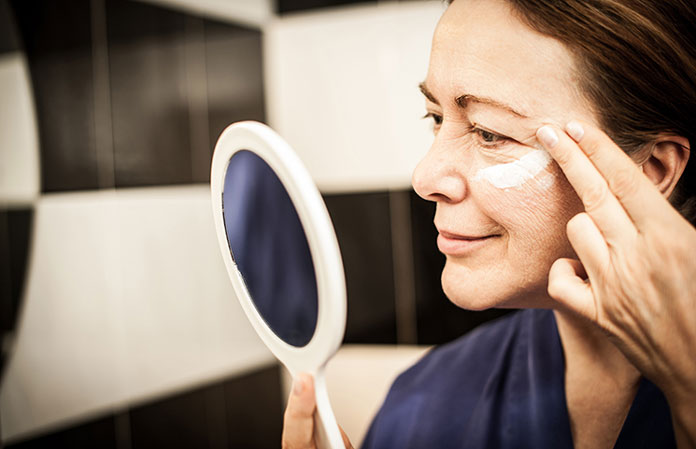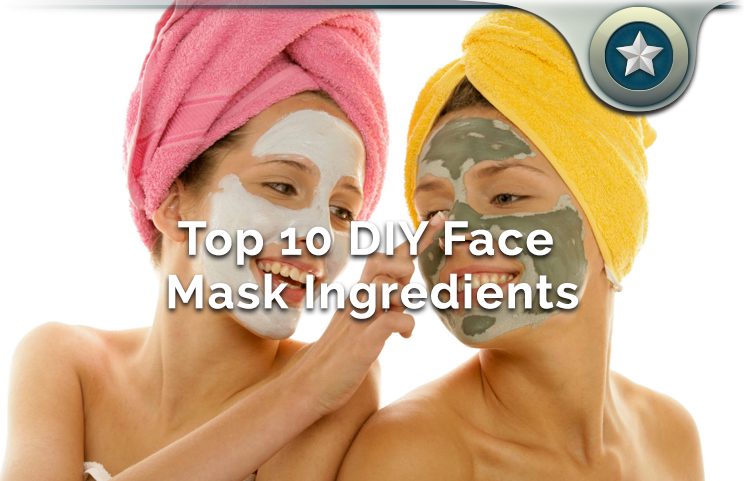By simply logging onto social media, or walking into your local supermarket, you are very likely to see face masks of every type, brand, and even color. Face masks have become very popular for what they can do for your skin, acne, and even facial redness.
Most of the time when you purchase a facial mask from the store, you will run into the problem of adding redness to your face instead of being able to take it away. This is a great reason to try and make your own face mask at home so that you can control all of the ingredients, as well as the amount that you put into each mask.
For people who have allergies or skin sensitivities, making a face mask at home is probably going to be the best option for you. You will be able to purchase ingredients that you know your skin does not react to and you can also make as much or as little as you need depending on how often you are going to use it.
Making your own face mask also comes at a slightly lower cost than it would if you were just buying one from the store. By making it yourself, you can decide how much you want to make at one time, giving you the freedom to make a little or a lot depending on your needs.
If you choose to make a lot at one time, you can store it more easily than you could if you purchased it. Instead of a lot of little containers sitting in and on your cabinets, you can have just one container to hold all of the face masks.
Buying multiple face masks can be expensive, especially when you are trying to see which brand and style works better for your face. When you make your own face mask, you can buy ingredients for multiple masks at one time and make smaller, trial sizes to see if you like a certain combination or not. This gives you the freedom to try out different recipes and create your own skin care routine without breaking the bank.
Because you are going to be making your own face masks, you should have at least a basic knowledge of kitchen skills given you will be mixing and creating these on your own. There are many resources online that will give you recipes to try along with step by step instructions on how to whip them up and store the leftovers. It is almost like making dinner, but it is for your face instead of your stomach.
There are many different recipes out there today and some contain ingredients that you may not be able to even pronounce, let alone know what they are. A good rule of thumb to use when it comes to creating your own face mask is to remember that if the ingredients are not all natural or you have a problem even pronouncing the names of the ingredients, it’s best to move on to another recipe.
Even for people who do not have sensitive skin, you want to make certain that you are using natural ingredients so that you will not run the risk of irritating your skin. It is also important to follow all the directions in your recipes, especially when the recipes involve food ingredients. Unless it is safe to do so, you don’t want to put raw food on your face in any form.
If you are unsure of whether or not you have any allergies to food or food-like ingredients, you will want to have an allergy test done before you begin experimenting with different face mask ingredients.
There are many different ingredients that you can use to make your own face mask such as foods like bananas and oatmeal. You can even use milk. You can buy and make your own clay face masks as well, so the possibilities are endless when it comes to facial care. Before you start making your own face masks, you really need to ask yourself what it is that you are looking for when it comes to a face mask.
Are you wanting something that you can make and use on a daily basis or maybe something more along the lines of once a week? Once you have figured out what you are going to be using it for, and how often you are going to be using it, then you will be better prepared for when you begin searching for recipes to base your potential face mask off of.
Once you have decided what you are going to be using your mask for, you can start to move on to the ingredients that you want to have in your face mask. You will want to look for items that are all natural, recipes that don’t contain anything artificial that can harm your skin. You also want to make sure that you are using ingredients that can help with not only reaching your skin goal, but something that will help you maintain that goal once you reach it. You want ingredients that you can find easily and that you will be able to continue purchasing once you have found your perfect match.
Don’t allow yourself to be sucked in by fancy labels and designs. Make sure the facial masks that you are using are going to be the best thing for your skin before and after you reach your overall goal. If you do have sensitive skin, check all the labels on each ingredient that you are buying for your mask to make sure that there are no ingredients in there that could cause your skin to break out.
You don’t want to work hard on your masks and your face only to have a bad breakout at the end of it all. This is why it is also important that you test a small area of your skin that can be covered by your hair or even make up. By testing a portion of your skin you will be able to tell if you have any type of reaction to the mask and then be able to trace your steps back to the source of the problem so you can remove that ingredient from your mask recipe.
Homemade Top 10 DIY Face Mask Ingredients Ingredients
Now that we’ve talked a little about what you need to do to prepare for making your own face mask, let’s take a look at some of the best DIY ingredients that you can put inside of your face mask. Not only will these give you an idea of what to use as ingredients, but it will also help you think of recipes that you can make on your own.

1. Bananas
This fruit isn’t just for eating anymore, it is actually a great ingredient for making your own face mask. By mashing a ripened banana into a paste, you can apply it to your face as a mask; this will help make your skin feel smooth. You can also add the mashed bananas to other ingredients to make masks for different skin needs.
Adding bananas to yogurt and honey and allowing it to dry for about 20 minutes before rinsing it off will help with any acne that you may have on your face. Research studies have also indicated that you can use a banana face mask to help reduce the appearance of any acne scars that you may have gathered over the years.
2. Apple Cider Vinegar
If you are looking to tighten your skin and give it a firmer, more youthful look, then add vinegar to your face mask. This mask is meant to be put on your skin after you have washed it with normal soap and water. Mix the apple cider vinegar with a little bit of water and apply it to your face and allow the liquid to dry.
Once it has dried, you can gently rinse your skin and you will notice after a few uses that you skin is smoother and your face has a youthful glow to it. Your pores will also be smaller and it will make it harder for dirt and grime to get into your pores and cause more acne.
3. Milk
When it comes to this ingredient, you do not want to use the regular milk that you might drink as this will not give you the consistency that you are looking for. You will want to use powdered milk instead and mix it with just enough water to create a thick paste. This may take a little trial and error because you want it to be thick enough that you are able to put it on your skin, but not thick enough that it clumps up on your face.
And you also do not want it so thin that it starts to drip from your face and won’t stay in place before you are ready to wipe it off. Once you find the right consistency, let it dry on your face completely before you rinse it off with warm water. This ingredient will give you a fresh from the spa look and feel to your skin and is safe enough to use on a daily basis.
4. Oatmeal
Want to feel like you are at the spa in your own home? Time to try an oatmeal face mask! Not only is oatmeal good for your body and overall health, it is also good for your skin too! When it comes to an oatmeal face mask, you will want to use plain oats and not instant oats, or any oats that have added flavors, dyes, or colors.
Combine oats and hot water with yogurt, honey, and one egg white and allow the ingredients to mingle together for a few minutes. Spread the oatmeal mixture onto your face and allow it to dry for about 10 to 15 minutes before rinsing it off with warm water. Since there will be whole oats in the face mask, you will want to make sure that you use something to catch the mask before it goes down the drain so that you don’t clog your sink with oatmeal.
5. Mayonnaise
Go with me on this one as this is a very popular DIY face mask that doesn’t need any other ingredients in it. You will want to make sure that the mayo you buy is made with whole eggs so that you can get the full benefits from this mask. Let your mayo sit in the fridge until it is cold and firmly set. Once you have achieved this, you simply pull the mayo out of the jar and spread it onto your face.
Once it is on your face, you will want to allow the mayo to sit and dry for about 20 minutes before you rinse it off. While you may smell a little like mayo for a few hours, you skin will be smooth and soft for a lot longer than that. Since most people already have mayo in their fridge, it shouldn’t be an added expense to use the same mayo for your face as well as your sandwich.
6. Yogurt

There are many different types and brands of yogurt on the market today but when it comes to a yogurt based face mask, you will want to look for a plain yogurt with no added flavors or ingredients in it. If you are looking for a face mask that will simply clean your skin, you can spread the yogurt onto your face and let it dry no less than 20 minutes before rinsing it off.
If you are looking for a face mask to put some life back into your skin, then you will want to add orange juice (directly from the orange) and some aloe to the yogurt and allow it to sit on your face for no more than 5 minutes. With the combination of ingredients in this mask, you do not need to let it sit for a long time to be able to get the benefits from it. Just make sure to rinse the mask off so you don’t attract ants.
7. Mustard
This is another face mask ingredient that may have your scratching your head and wondering how it is going to help you. Plain yellow mustard can actually be a type of facial scrub when it is used properly and it is NOT to be used on a daily basis. This is one face mask ingredient that you will want to use sparingly on your skin to make sure that it will not cause you to break out or irritate your skin.
Once you have determined whether or not it will irritate your skin, you can begin spreading it out over your entire face. Allow it to dry for no longer than 5 minutes before rinsing it off with cool water. The longer you let it sit the more likely you will experience a skin irritation. You do not want to use this ingredient on a daily basis as it is designed to be used more on a monthly basis to get rid of dead skin and other gunk and grime that other face masks might leave behind.
8. Lemons
Lemons can be used as an exfoliator for your skin and help you to remove dead skin cells that may be stuck to your new skin. Mixing lemon juice directly from the lemon (not the lemon juice that you can buy) with water, olive oil or almond oil is the best way to go. You will want to use the lemon juice with the oil and spread it onto your face in an even layer, allowing it to dry for less than 10 minutes.
Once it is dry, you can gently scrub it off with a wet rag and cool water. This will give your face a new glow and will leave your face soft and supple.
9. Eggs

Eggs are best for people who have a lot of dry skin, or people who experience dry skin on occasion. There are two different recipes that you can use with eggs to make facial masks, one for oily skin and the other for normal skin. If you have oily skin you will want to take the egg white and combine it with lemon or honey and apply it to your face for a few minutes before rinsing it off.
For people with normal skin, take the entire egg (yolk and egg whites as well) and combine it with lemon or honey then apply it to your skin in the same way as people with oily skin. If you are simply looking for a moisturizer for your face, you will want to separate the yolk from the egg white and use the beaten yolk on your face without the egg whites.
10. Clay
There are many clay mask treatments on the market today and some contain many other ingredients that may not be so good for your skin. When it comes to clay masks that you can make at home, you want to look for powdered clay that has no other added ingredients to it. It may take you a while to find some depending on where you live, but once you have found an all-natural clay, your skin will thank you.
You will mix the powdered clay with water until you have formed your desired consistency, then apply it to your face and leave it there until the clay is hardened and dry to the touch.
Rinse the clay off with warm water as this will allow the clay to return to a liquid type state and will come off easier. Most clays are safe for everyday use, but you will see more results if you use it a few times a week instead of every day.
It is important when using a clay that you do your research and confirm that the clay you are using is completely natural as there are some clay masks and clay ingredients that can irritate your skin and cause you to have more breakouts than you did before.
While there are no clear-cut face masks that cater to each type of skin, you can find some that will do exactly what you want them to do if you make them yourself. By making your masks at home, you can combine the ingredients that work the best for your skin without spending a ton of money in the process.
This will also give you the opportunity to learn more about your own skin and how oily or dry your skin might actually be. By learning more about your own skin, you will be better prepared to take care of it and create a mask that will give you the desired results that you are looking for.
Before you begin making your own face masks at home, you will want to consult with a medical doctor or an allergist to make sure that you are not allergic to anything you might not know about.
This is especially important if you are going to be placing many different ingredients on your face that you might not be eating either. If you are sure that you do not have any allergies to any of the food ingredients that you are wanting to try, then go for it and work your way to a better, healthier skin.
DIY Face Mask Ingredients Conclusion
As with anything new that you try on your skin, make sure to test your new facial masks on a part of your face or neck that can be covered with hair or makeup in the event that it does cause you to breakout.
Before using any new recipe on your face, you will want to test it for the same length of time that you would if you were putting it on your entire face. This will give you the most accurate results in terms of if it will irritate your skin or not. Start with something simple and work your way up from there, giving your skin plenty of time to breathe before you try a new recipe.









